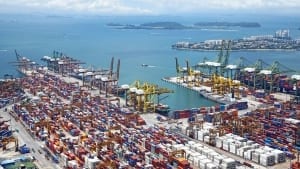How the Rapid Growth of Ecommerce Is Driving Changes in Logistics and Transportation Management

Smart devices and wireless connections are now nearly everywhere and have already contributed immensely to the growth of the e-commerce industry. But, the desire for instant gratification is also forcing logistics and transportation businesses to provide delivery options that are faster, more cost-effective, and convenient as well as offer increased flexibility to the customer.
With the customers demanding faster deliveries, field service businesses are now looking to develop a more time-definite supply chain. They are in a race to conquer the “last-mile” and are seeking the most effective ways to deliver packages of all sizes directly to customers’ homes.
From the size of shipments to the distribution networks and even the way warehouses may need to be built, e-commerce is impacting more than we realize. It is changing the entire logistics industry and the world we live in.
How is Ecommerce Transforming Logistics and Transportation Management?
To maintain customer loyalty and stand out from the crowd, most e-commerce companies are continually trying to offer cheaper and faster shipping or easier returns. This means that logistics companies need to rethink their fulfillment processes.
Transportation Needs Are More Complex
The fulfillment process is well-trodden territory for brick-and-mortar retailers: packages come directly to the stores at predictable intervals. However, for e-commerce businesses, shipping parcels to different locations safely and punctually requires complex planning. Expensive and complex processes, such as reverse logistics and last-mile delivery, mean that logistics businesses are continually adapting their processes to meet customer expectations and stay competitive.
The latest trend in last mile delivery management focuses on the localization of distribution, where the goal is to leverage the existing infrastructure and optimize it through technology. Cloud-based optimization may also help transportation companies handle the fluctuations in demand through better scheduling and planning.
Inventory Planning Has Become Crucial
Online shoppers are becoming increasingly demanding. A recent study found that almost 80% of customers want same-day shipping, while nearly 61% expect their packages to arrive within 1 to 3 hours of placing an order. Many logistics companies are struggling to deliver on this expectation. So, rethinking inventory placement is key to gaining a competitive edge over rivals.
Distribution Centers Are Closer to Customers
With the omnichannel approach to e-commerce gaining ground, there is a major need for distribution centers to be located near urban markets. The proximity to urban areas allows parcels to get delivered faster, which is a key differentiator. Companies with a planned network of strategically placed distribution centers will be better able to handle the scalability issues that the hugely growing e-commerce market is likely to impose on them.
Operation Costs Have to Be Reduced
With customers expecting free shipping and membership schemes that guarantee same day delivery, transportation costs have increased. Route planning tools can help plan and share accurate routes with the drivers to deliver the parcels on time, while ensuring the lowest cost of transportation. In fact, according to a McKinsey report, algorithmic route optimization results in an almost 16% increase in a company’s profit, without compromising on quality.
Conclusion
The rapid growth of the e-commerce industry will demand an equally strong response from the transportation and logistics businesses. To keep up with the increasing demands from e-commerce companies and to meet the expectations of customers, logistics companies will need to invest in warehouses and distribution centers.
Businesses that fail to keep up with the logistics trends will risk losing a competitive edge and falling out of favor with customers. The successful logistics businesses will be those that can quickly find innovative solutions to new problems and are ready to find solutions to more problems the day after that.













Leave a Reply
Want to join the discussion?Feel free to contribute!